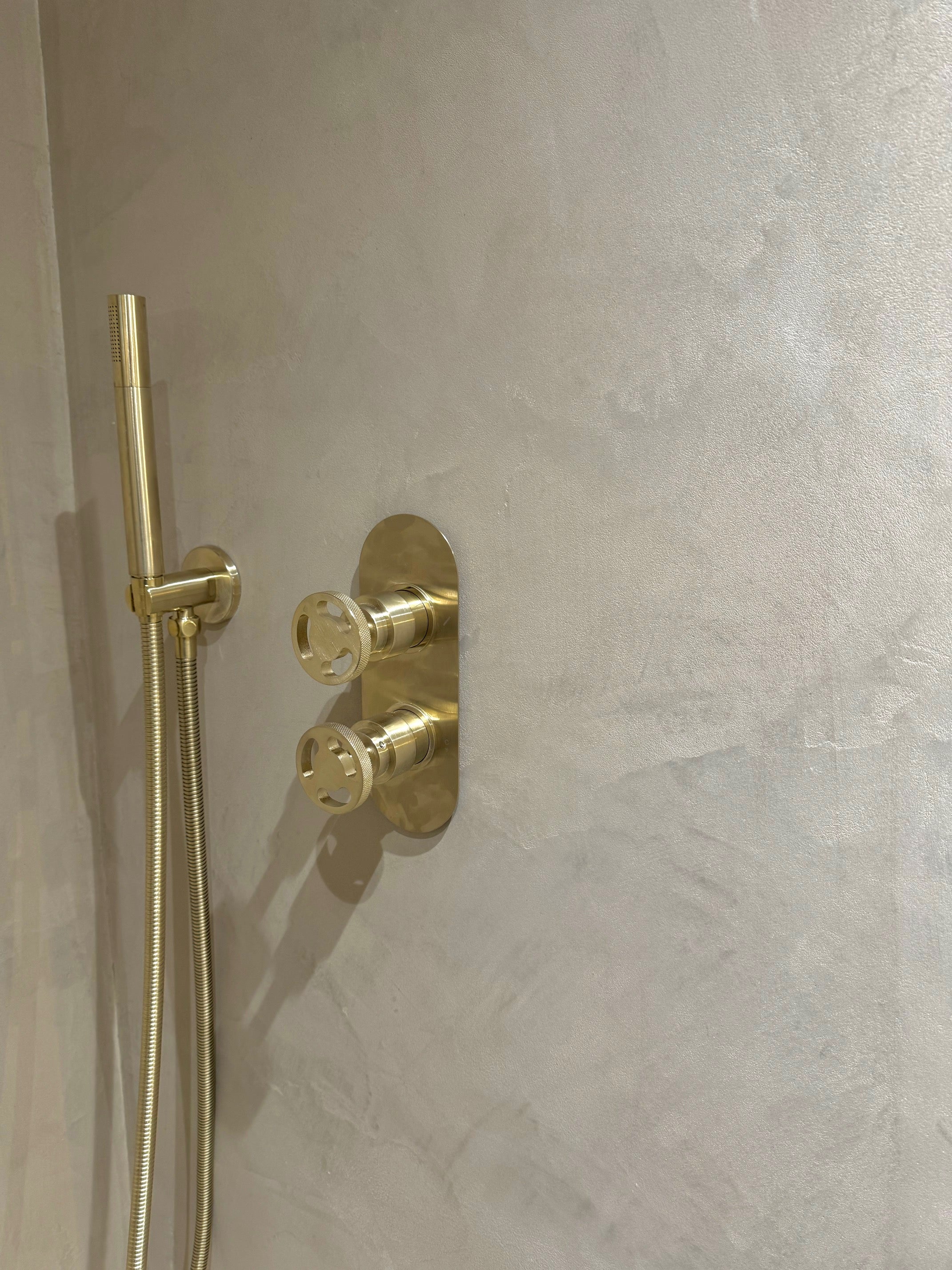What are the Advantages of Microcement over Tiles?

Share
- Bathroom
- Flooring
- Kitchen
- Microcement
- Microcement Application
- Microcement Floor
- Microcemento
- Minimalist
- Water-resistant
When it comes to surface finishes that are durable and resistant, tiles and microcement always come up amongst the most popular options in interior design.
Tiles have been around for a while, which means that for a long time, they were thought of as the standard solution, especially for wet room areas. In recent years, however, Microcement seems to win over a growing portion of homeowners, designers and interior enthusiasts, due to its seamless finish and versatility.
But what exactly are the advantages of Microcement over tiles? Let’s take a look at 3 major factors of comparison; features, application and cost.
Features
Seamless Finish
One of the key features that made Microcement popular was first and foremost, the seamless uniform finish, which can be applied over any surface, from walls to floors, and even furniture. This seamless look can create a beautiful, cohesive space with a luxurious feel only bespoke finishes can offer.
Durability
Microcement is a wonderful option as a decorative material, that is also functional and durable. Depending on the type of Microcement you use, the durability and resistance can differ, but this multi-component system boasts competitive resistance to daily wear and tear, due to its resin finishing coat.
Aesthetic Versatility
The versatility of the material impresses everyone who finds out about it. Aside from the range of neutral and bold colour selections, we have available at Impera Italia, we also offer a colour match service. This means that you can have the material in any colour you’d like, in a matt satin or glossy finish.
To add an extra layer of customization, Microcement’s decorative coat is a material that can achieve different textures or none at all. Whether you choose an ultra-smooth or a slightly rougher texture, it will not impact the durability or the practical maintenance of the finish.
Minimal Environmental Impact
For those concerned with the environmental impact of the material, and who want to minimise the waste occurring during the renovation process, Microcement is a considerably better choice compared to tiles.
As Mictrocement can be applied over the existing substrate, saving you the cost and time of having to remove and dispose of it.
Our supplier for Microcement, San Marco, is known for its excellent standards when it comes to creating eco-friendly materials, ensuring that any product they manufacture has the least amount of negative effects on the environment.
Application
The application of microcement, as a multi-layer coating system is a complex process, and should only be done by professionals. Compared to tiles, the cost is very competitive, especially when we calculate how much it would cost to remove any old surface covering. Microcement is a relatively easy solution to renovate large areas, without extensive surface preparation, reducing the hassle that renovations can mean sometimes.
Depending on the type of Microcement you choose, they can be applied on both residential and commercial properties, where a stylish, seamless look is required.
For those who are concerned about whether our Microcement options would be suitable for their project, we recommend emailing to sales@imperaitalia.com , and getting professional advice from our experts!
If you are interested in learning to apply Microcement, check out beginner and advanced courses!
Cost
Depending on where the project is, and how large it is, the installation cost can vary wildly for Microcement. As the framework of applicators is not as established yet for this relatively new decorative material, it requires some research to ensure you get the right people for the job.
At Impera Italia, we are happy to say we have decades of experience and insights into the industry and can guide our customers to the right place. Our Brand Ambassadors are successful professionals with their own businesses, whose work we trust and recommend to anyone who needs an installer.
Aside from the initial cost, Microcement can be a cost-effective option given its durability and simple maintenance requirements. It can be applied over existing surfaces, which means that it will save you the trouble and the cost of having to remove the previous substrate, saving you the cost of any extensive surface preparation.
Conclusion
Whether Microcement is the right choice for you, will depend entirely on on what your priorities are for your project.
Microcement enjoys a strong advantage over tiles when it comes to versatility, due to the nature of the products. It’s the best option for a bespoke design, and for anyone who wants to enjoy its customisable features.
Whilst regular maintenance can go a long way, it’s a good idea to reseal the finish periodically, to ensure it maintains its original look. However, it will save you the trouble of dirty grout lines, and dirt accumulating in the crevices.
Its seamless look can present a great solution for those who want a simple uniform look that creates a cohesive look for surfaces, from flooring to furniture, ensuring a consistent finish everywhere you look.
Photo credit to DQ Surface Designs
@dq_surface_design_training
